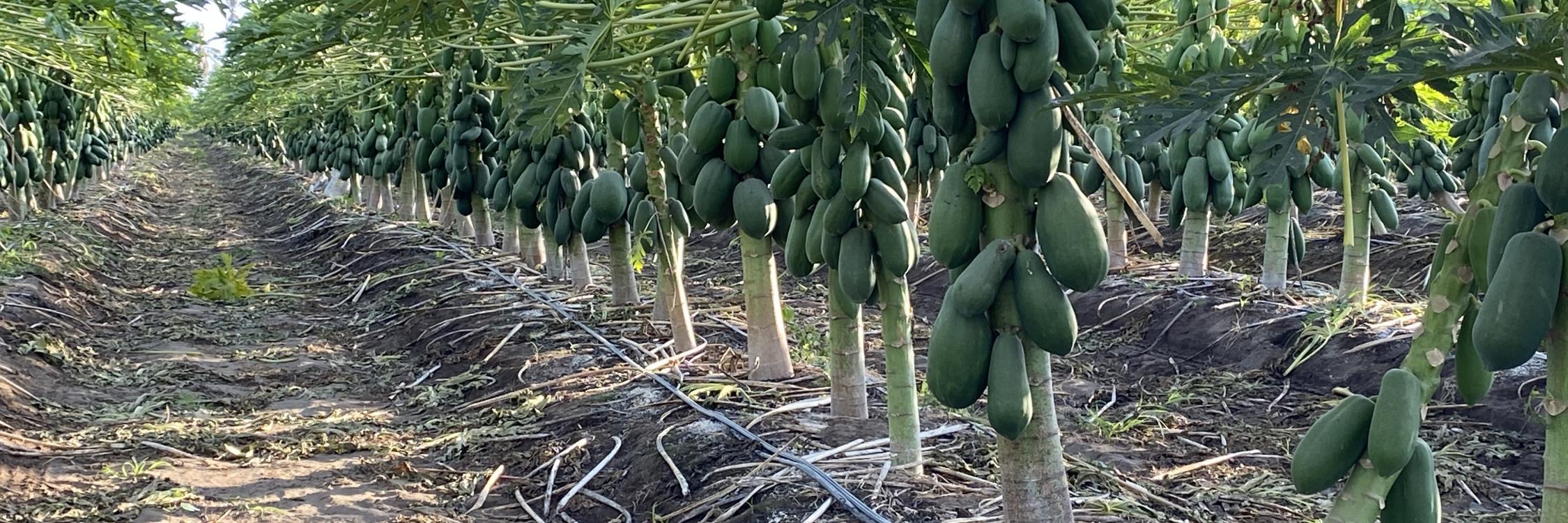
Sweeter papayas with better consistency and taste
This is obtained through many years of experience and the use of thiosulfates
In Tecomán, Colima (Mexico), the introduction of thiosulfates in the papaya fertilization program has led to higher profitability with better fruit quality (Brix and taste), increased yield, and enhanced soil condition.
Mr. Ceja, an agronomist and the son of a second-generation grower of papaya in the area, together with Leonardo Patiño, Agronomy Manager at Tessenderlo Kerley, both confirmed that the use of KTS®, CaTs®, and Thio-Sul® results in higher quality fruit, homogeneity in the size of fruits, and resistance to disease incidence.
This verification was made through potassium measurements in the petiole, the use of the Brix refractometer, and soil analysis to monitor sodium levels. The papaya growers confirmed they are satisfied with the results and the profitability obtained.
The growers also observed that potassium levels are higher in the plant since they have been using KTS® as compared to the lower levels obtained with potassium nitrate.
- Thio-Sul® was recommended during the first stage because it removes salts and reduces soil pH values
- CaTs® was also suggested at different doses from the first stage all through the fruit development stage as it provides highly assimilable liquid calcium and it improves fruit firmness.
- KTS® was recommended during the fruit development stage with the objective of improving Brix levels. Liquid potassium enhances resistance to hydric stress, fosters an even growth of the plants, and improves fruit firmness.
The three liquid fertilizers based on thiosulfates were dosed in the nutrition plan through the irrigation system. They provide essential nutrients, improve the soil structure, allow better water infiltration, and solubilize soil nutrients.